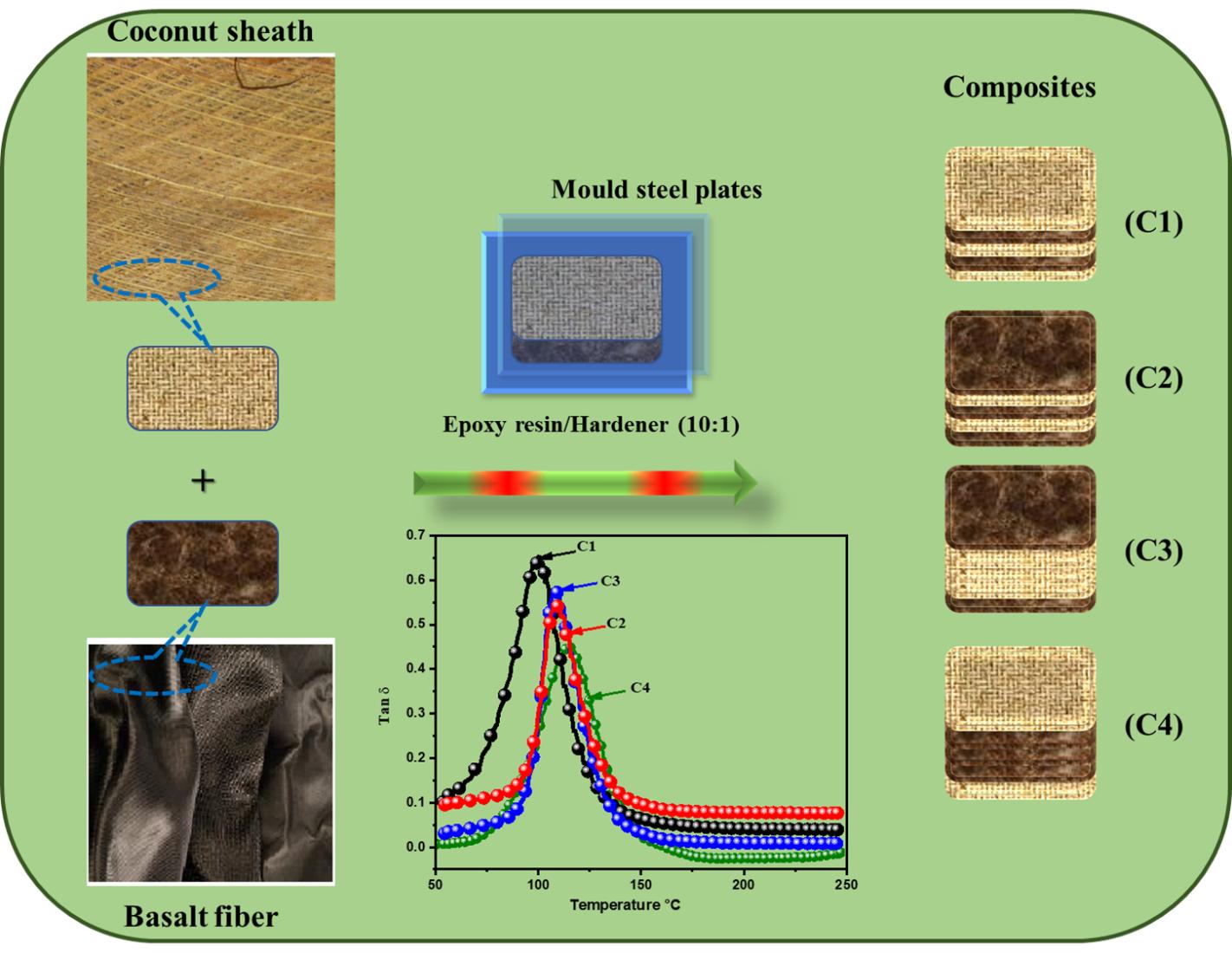 Open Access
Open Access
ARTICLE
Hybrid Epoxy Composites Reinforced with Coconut Sheath and Basalt Fibres: Enhancing Mechanical and Thermal Performance for Sustainable Applications
1 Department of Chemistry, Dhanalakshmi Srinivasan Engineering College, Perambalur, 621212, India
2 Department of Chemistry, School of Advanced Sciences, Kalasalingam Academy of Research and Education, Krishnankoil, 626126, India
3 School of Chemical Engineering, Yeungnam University, Gyeonsan, 38541, Republic of Korea
4 Department of Chemical and Materials Engineering, National Yunlin University of Science and Technology, Douliu, 64002, Taiwan
5 Department of Computational Biology, Saveetha School of Engineering, Saveetha Institute of Medical and Technical Sciences, Saveetha University, Chennai, 602105, India
* Corresponding Authors: Balamurugan Rathinam. Email: ; Vanaraj Ramkumar. Email:
Journal of Polymer Materials 2024, 41(4), 207-218. https://doi.org/10.32604/jpm.2024.057901
Received 30 August 2024; Accepted 12 November 2024; Issue published 16 December 2024
Abstract
The present study focuses on sustainable biopolymer composites created from coconut sheath and basalt fibres, which are biodegradable, environmentally benign, and have low carbon footprints. High specific strength, superior mechanical performance, reduced weight, and improved thermal stability are all displayed by these materials. Four hybrid epoxy composites (C1–C4) were produced utilizing five stacking sequences and compression moulding, demonstrating that hybridization considerably enhances mechanical characteristics. The hybrid and pure basalt fibre composites have larger storage moduli than untreated coconut sheath fibre-reinforced epoxy (2.1 GPa). The greatest glass transition temperature (Tg) for C4 has been determined to be 118°C. These low-cost, non-toxic composites provide environmentally friendly options for use in the electronics, packaging, automotive, and construction sectors.Graphic Abstract

Keywords
Cite This Article
 Copyright © 2024 The Author(s). Published by Tech Science Press.
Copyright © 2024 The Author(s). Published by Tech Science Press.This work is licensed under a Creative Commons Attribution 4.0 International License , which permits unrestricted use, distribution, and reproduction in any medium, provided the original work is properly cited.


 Submit a Paper
Submit a Paper Propose a Special lssue
Propose a Special lssue View Full Text
View Full Text Download PDF
Download PDF Downloads
Downloads
 Citation Tools
Citation Tools